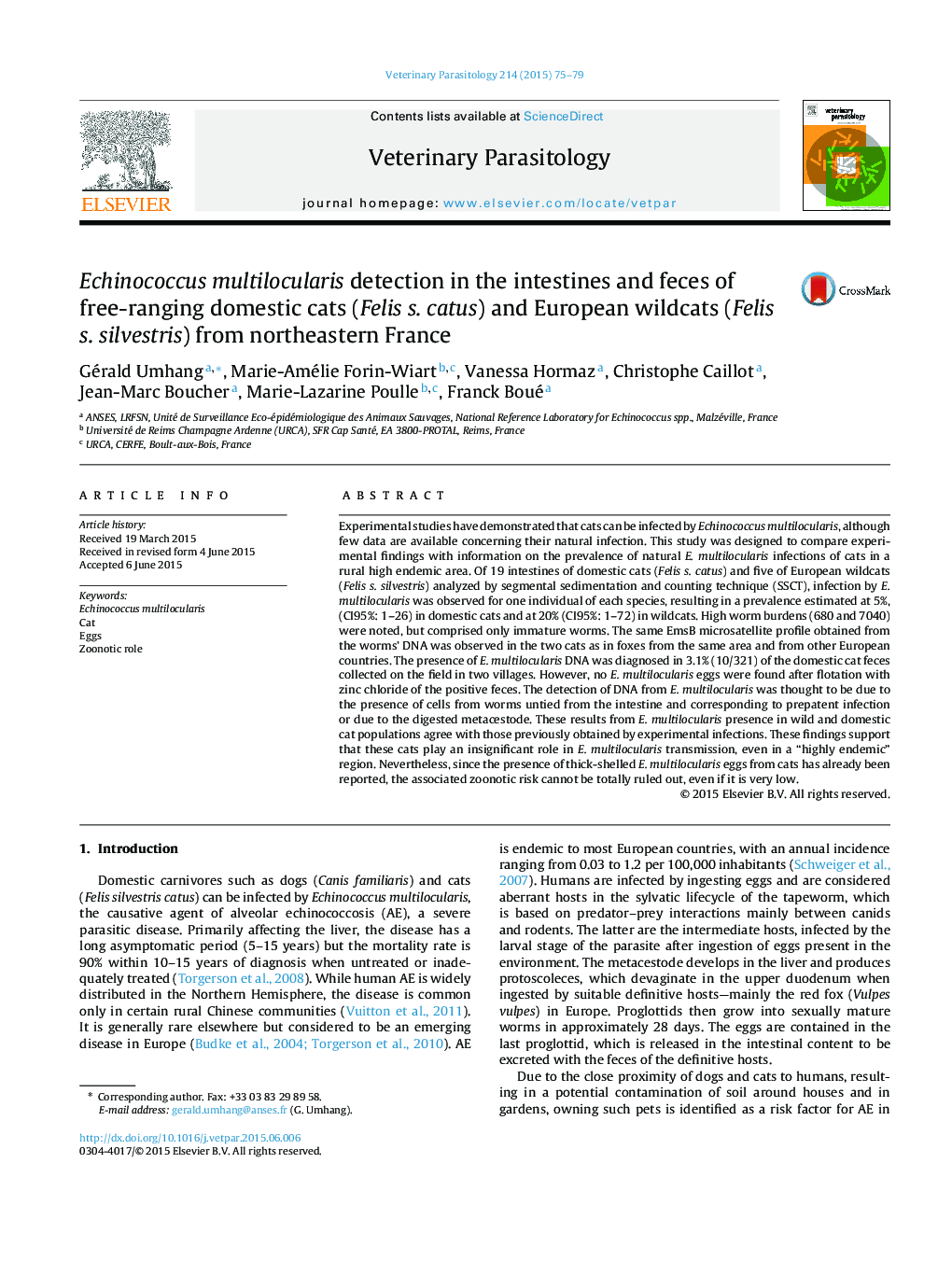| کد مقاله | کد نشریه | سال انتشار | مقاله انگلیسی | نسخه تمام متن |
|---|---|---|---|---|
| 5802236 | 1555663 | 2015 | 5 صفحه PDF | دانلود رایگان |

- Cats play an insignificant role in E. multilocularis transmission.
- E. multilocularis worms in intestines (5%) and DNA in feces (3.1%) of domestic cat.
- No E. multilocularis eggs in cat feces even when DNA is detected.
- High E. multilocularis worm burden (680 and 7040) in cats but all are immature.
- Same EmsB microsatellite profile from worms observed in cats as previously in foxes.
Experimental studies have demonstrated that cats can be infected by Echinococcus multilocularis, although few data are available concerning their natural infection. This study was designed to compare experimental findings with information on the prevalence of natural E. multilocularis infections of cats in a rural high endemic area. Of 19 intestines of domestic cats (Felis s. catus) and five of European wildcats (Felis s. silvestris) analyzed by segmental sedimentation and counting technique (SSCT), infection by E. multilocularis was observed for one individual of each species, resulting in a prevalence estimated at 5%, (CI95%: 1-26) in domestic cats and at 20% (CI95%: 1-72) in wildcats. High worm burdens (680 and 7040) were noted, but comprised only immature worms. The same EmsB microsatellite profile obtained from the worms' DNA was observed in the two cats as in foxes from the same area and from other European countries. The presence of E. multilocularis DNA was diagnosed in 3.1% (10/321) of the domestic cat feces collected on the field in two villages. However, no E. multilocularis eggs were found after flotation with zinc chloride of the positive feces. The detection of DNA from E. multilocularis was thought to be due to the presence of cells from worms untied from the intestine and corresponding to prepatent infection or due to the digested metacestode. These results from E. multilocularis presence in wild and domestic cat populations agree with those previously obtained by experimental infections. These findings support that these cats play an insignificant role in E. multilocularis transmission, even in a “highly endemic” region. Nevertheless, since the presence of thick-shelled E. multilocularis eggs from cats has already been reported, the associated zoonotic risk cannot be totally ruled out, even if it is very low.
Journal: Veterinary Parasitology - Volume 214, Issues 1â2, 30 November 2015, Pages 75-79